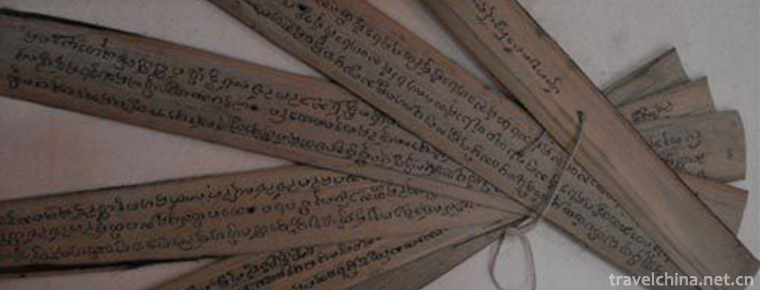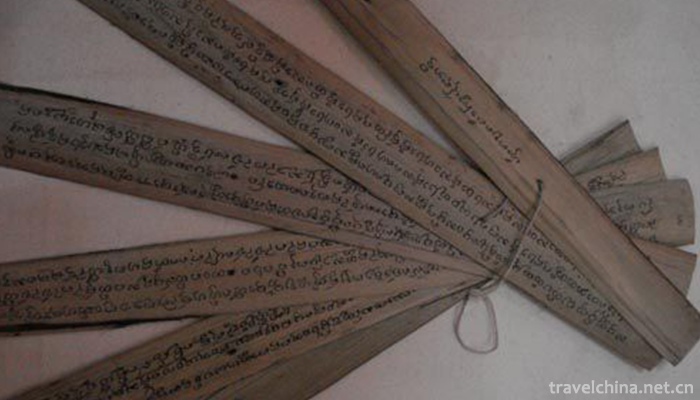2019-01-06

- By ChinaWiki.net
- Chinese Edition
- 2019-04-04
Bay Leaf Jing Making Skills
In June 2008, the technique of making bay leaf Scriptures was listed in the national intangible cultural heritage protection list. The Beiye Sutra (Dai for "lazy") refers to the Buddhist Sutra written on the treated tropical plant Beiye Brown (Dai for "lazy Guo"). After being treated by many traditional and special processes, the bay leaf can prevent insects, waterproof and deformation. The scriptures copied by the bay leaf can be handed down for thousands of years.
On June 7, 2008, Bay Leaf was listed in the second batch of national intangible cultural heritage list with the approval of the State Council.
Historical origin
The Bayesian Classic originated in India and was introduced into the Dai inhabited areas of Yunnan around the 7th century. It has been enriched and developed. Beiye Sutra of Dai nationality not only records Buddhist classics, but also includes many contents of Dai nationality, such as astronomy, calendar, social history, philosophy, law, medicine, science and technology. It is an encyclopedia of Dai culture. It plays an important role in the production and life of Dai people and is regarded as a precious wealth. In Dai Buddhist temples, there is a special Tibetan Sutra Pavilion for the preservation of palm-leaf scriptures. According to folklore, there are more than 80,000 palm-leaf scriptures in ancient times, more than 3,000 in Xishuangbanna, and a large number of them are scattered among the people.
The Dai language is called "Tanlan", which is a classic of Buddhism from the Upper Seat in the south. It is written on a special "Golan" (palm palm leaves) with a folk-made iron pen. The Bayesian Sutra originated in India. It is generally believed that the Baye Sutra was introduced into Sri Lanka around the 7th century AD and then into the southwestern frontier of Yunnan Province through Myanmar and Thailand.
There are about 45,000 Dai palm-leaf scriptures found in Xishuangbanna, Pu'er, Lincang and Dehong of Yunnan, of which more than 2,000 are registered. As the Dai people in Xishuangbanna share the same ethnic origin (Baiyue ethnic group) with the Thai, Lao and Shan people in Thailand and Myanmar, and share the same belief in the Southern Upper Buddhism, their living areas are linked by mountains and rivers, thus forming a Bayesian cultural circle in Southeast Asia. The intangible cultural heritage is often called the "living fossil" of folk cultural history. The Baye Sutra of Yunnan is one of the "living fossils", which is called "Dai culture carved on leaves", which is unique to China and one of the most precious cultural treasures of the Chinese nation.
Inheritance significance
The Dai Beiye Sutra refers to the Scriptures recorded on the bayette with Buddhist classics as the core content. It has played an important role in the social and economic development of the Dai people, the dissemination of Buddhist ideas and the inheritance of Buddhist culture.
Among the numerous national intangible cultural heritages, the Baye Sutra is unique because of its unique craftsmanship and Dai culture. It is only used in Dehong, Xishuangbanna and other places in Yunnan, China. The famous "Shaoshutun" (Peacock Princess Story) comes from the Southern Dai Buddhist classic "Baye Sutra" in Yunnan. It is self-evident that the protection of the palm-leaf scriptures is of great significance. However, the reality is that there are many people in Yunnan who can speak Dai language, but few people can understand and write Dai language, and even fewer can write the Baye Sutra. Fortunately, the protection of "living fossils" in Yunnan has been ongoing.

Ask a Question
Your email address will not be published.



0 Questions